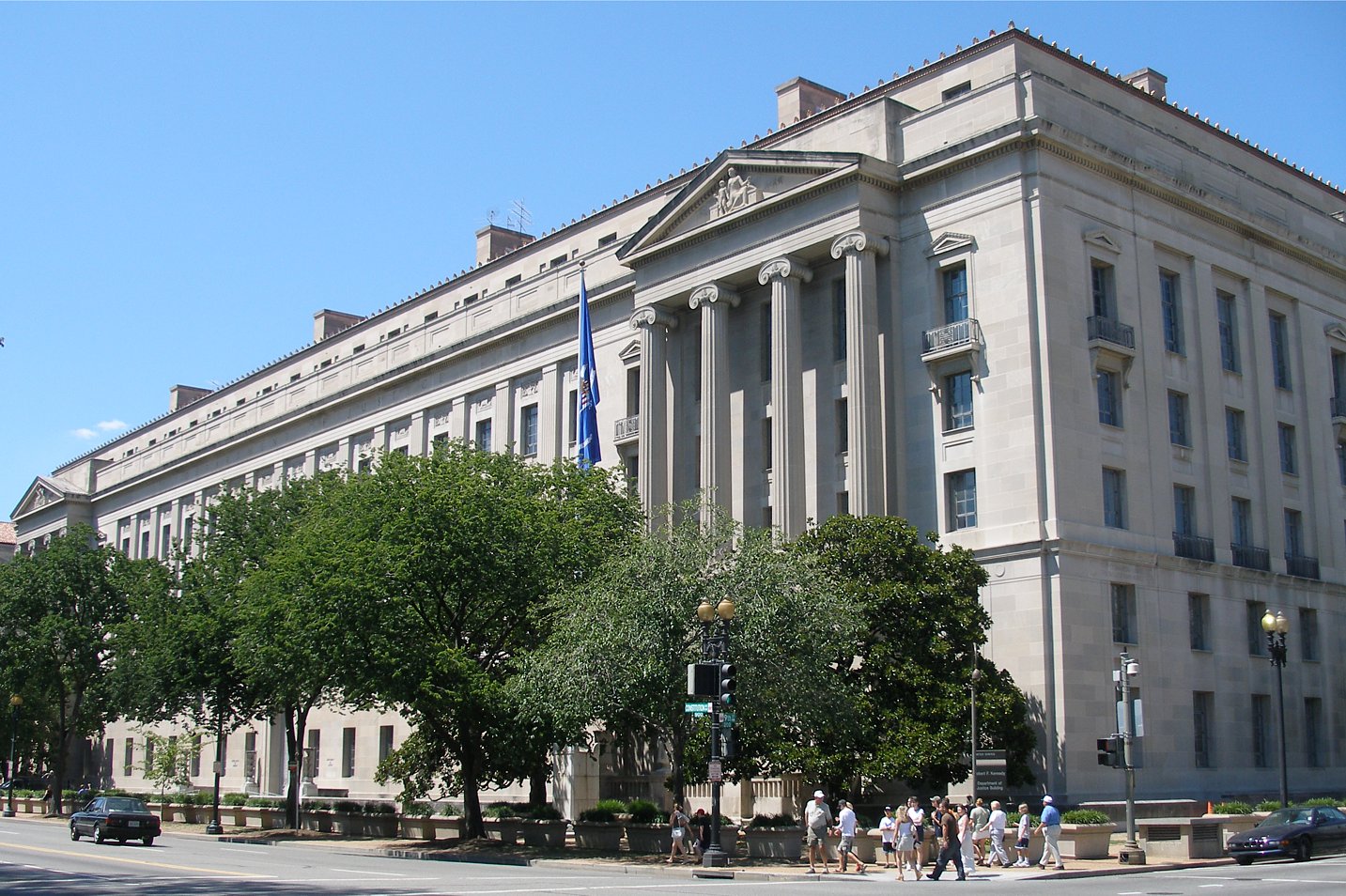A Summary of the White House Report on Legal Frameworks Governing Use of Military Force
As Ben noted, earlier today the White House released a report on the legal and policy frameworks guiding the use of military force and related nation security operations. The document, as Ben puts it “the closest thing the administration has ever produced” to a comprehensive account of its legal views. Below is a detailed summary of the report.
Part One: Key Frameworks Related to the Use of Military Force Overseas
Published by The Lawfare Institute
in Cooperation With

As Ben noted, earlier today the White House released a report on the legal and policy frameworks guiding the use of military force and related nation security operations. The document, as Ben puts it “the closest thing the administration has ever produced” to a comprehensive account of its legal views. Below is a detailed summary of the report.
Part One: Key Frameworks Related to the Use of Military Force Overseas
Part One of the White House report presents “key frameworks” related to the use of military force overseas. Its analysis is divided into five subsections: (1) domestic law and (2) international law bases for the use of military force, (3) the end of armed conflict with non-state armed groups, (4) domestic and international law considerations regarding international cooperation, and (5) application of the foregoing principles to a selection of “key theaters.”
- Domestic law bases for the use of military force
The report identifies two domestic legal bases for the use of military force: the 2001 Authorization for the Use of Military Force (AUMF) and the President’s “Commander in Chief” constitutional prerogatives. According to the report, “all three branches of the U.S. Government have affirmed the ongoing authority conferred by the 2001 AUMF and its application to al-Qa’ida, to the Taliban, and to forces associated with those two organizations within and outside Afghanistan.” To this end, the report cites a March 2009 Department of Justice brief on Guantanamo Bay detention, the 2012 National Defense Authorization Act (NDAA), and a number of federal court decisions (e.g., Ali v. Obama, Al-Adahi v. Obama, and Hussain v. Obama).
The White House proceeds to outline conditions that must be met for an entity to be an “associated force[]” for the purposes of the 2001 AUMF. The entity must be, first, “an organized, armed group that has entered the fight alongside al-Qa’ida or the Taliban” and, second, “a co-belligerent with al-Qa’ida or the Taliban in hostilities against the United States or its coalition partners.” Furthermore, a group must do more than align itself with or embrace the ideology of al-Qa’ida or the Taliban to be considered an associated force.
The White House provides two examples of how these principles have been applied. First, Al-Shabaab, operating in Somalia, is an associated force of al-Qa’ida because it (1) publicly pledged loyalty to al-Qa’ida, (2) made clear that the United States is an enemy, and (3) is responsible for attacks and threats against US interests and persons. The report claims that the same is true of the Islamic State notwithstanding its 2014 split from al-Qa’ida since “the same organization continues to wage hostilities against the United States as it has since 2004, when it joined bin Laden’s al-Qa’ida.” Moreover, the White House argues that if the 2014 split denied the administration’s authority to attack the Islamic State it would be tantamount to allowing “an enemy force . . . to control the scope of the 2001 AUMF by splintering into rival factions while continuing to prosecute the same conflict against the United States.”
The report also asserts that “longstanding Executive Branch practice” confirms the President’s ability to take military action without prior Congressional authorization due to his “constitutional responsibility as Commander in Chief and Chief Executive for foreign and military affairs.” The White House recognizes, however, that this constitutional authorization is not unlimited. A limit “may exist” where “a planned military engagement constitutes a ‘war’ within the meaning of the U.S. Constitution’s Declaration of War Clause.” Determining whether a military action would fall into such an exception depends on “a fact specific assessment of the ‘anticipated nature, scope, and duration’ of the planned military operations.” The report also recognizes that the 1973 War Powers Resolution further limits the President’s authority to conduct hostilities without prior Congressional approval.
- International law bases for the use of military force
In this second subsection the administration outlines its understanding of the jus ad bellum, i.e., criteria that must be met under international law to engage in armed conflict. The report begins with the United Nations Charter. While it recognizes that, under Article 2(4), “[a]ll Members shall refrain in their international relations from the threat or use of force,” most of the analysis focuses on Article 51, which provides that, “[n]othing in this Charter shall impair the inherent right of individual or collective self-defense if an armed attack occurs.” As such, the administration outlines three possible scenarios for lawful armed conflict: (1) an authorization from the UN Security Council under Chapter VII, (2) a declaration of self-defense under Article 51, and (3) the consent of a UN Member State.
Analysis of the second rationale, self-defense, constitutes the bulk of this subsection. The report begins by asserting that States “have invoked the right of self-defense to justify taking action on the territory of another State against non-State actors” “for centuries,” citing the Caroline incident and recent Article 51 submissions from the US and other partners in the fight against the Islamic State. The administration goes on to contend that the right of self-defense applies to “imminent attacks before they occur” (italics original). Imminence is comprised of five factors: (1) the threat’s nature and immediacy, (2) probability of attack, (3) whether the anticipated attack is part of a concerted pattern of continuing armed activity, (4) likely scale of the attack and likely resultant injury, loss, or damage if no mitigating action is taken, and (5) the likelihood of other opportunities for effective self-defense that may be expected to cause less serious collateral injury, loss or damage. The report asserts that, for self-defense purposes, “absence of specific evidence” concerning an attack “does not preclude a conclusion that an armed attack is imminent.” It also states that imminence must be understood “in light of the modern-day capabilities, techniques, and technological innovations of terrorist organizations.”
The report goes on to explain that States can exercise its right of self-defense without a territorial State’s consent “when they face actual or imminent armed attacks by a non-State armed group and the use of force is necessary because the government of the State where the threat is located is unable or unwilling to prevent the use of its territory by the non-State actor for such attacks.” While there is no strict definition for “unable” or “unwilling,” the report does provide some examples. For example, “inability” can be demonstrated where “a State has lost or abandoned effective control over the portion of its territory where the armed group is operating.” Unwillingness may also be demonstrated where “a State is colluding with or harboring a terrorist organization operating from within its territory and refuses to address the threat posed by the group.”
Finally, the administration argues that international law does not require a State to “reassess whether an armed attack is occurring or imminent prior to every subsequent action taken against that group, provided that hostilities have not ended.” Nor are subsequent self-defense actions limited to “hot” battlefields.
- The end of armed conflict with non-state armed groups
The report recognizes that there is “little chance that there will be an agreement to end these hostilities” with contemporary non-State armed groups. At the same time, the White House reaffirmed President Obama’s statement that current conflicts cannot continue indefinitely. The report reconciles these propositions by arguing that, “At a certain point, the United States will degrade and dismantle the operational capacity and supporting networks of terrorist organizations like al-Qa’ida to such an extent that they will have been effectively destroyed and will no longer be able to attempt or launch a strategic attack against the United States.” At that point, the administration believes, “there will no longer be an ongoing armed conflict between the United States and those forces.”
- Legal considerations regarding international cooperation in armed conflict
The report presents domestic and international law authorities and limits to international cooperation in armed conflict. A non-exhaustive list of domestic authorizations is presented first, including a provision for “appropriately vetted Syrian groups and individuals” in the 2015 NDAA. The White House also recognizes two limits to international cooperation: Leahy Laws and Executive Order 12333. The Leahy Laws prohibit using funds to assist groups if the Secretary of Defense or State “has credible information that the unit has committed a gross violation of human rights,” a fact-based determination. Executive Order 12333 provides that “no person employed by or acting on behalf of the United States Government shall engage in, or conspire to engage in, assassination.”
The White House asserts that a State incurs responsibility under international law “for aiding or assisting another State in the commission of an internationally wrongful act when: (1) the act would be internationally wrongful if committed by the supporting States; (2) the supporting State is both aware that its assistance will be used for an unlawful purpose and intends that its assistance be so used; and (3) the assistance is clearly and unequivocally connected to the subsequent wrongful act.” The report also recognizes that coalition partners have differential responsibility under international law. To that end, the United States “meets with coalition partners on a regular basis to discuss legal obligations and good practices in implementing those obligations.”
- Case studies for the application of domestic and international law
In this final subsection, the report provides brief vignettes of how the foregoing legal considerations are at play in six theaters: Afghanistan, Iraq, Syria, Somalia, Libya, and Yemen.
Part Two: Key Legal and Policy Frameworks Related to the Conduct of Hostilities
In Part Two, the White House turns to key aspects of the conduct of hostilities, examining each of five areas under domestic and international law, and U.S. policy. The report covers: (1) targeting; (2) capture; (3) detention (including the scope of authority under the 2001 AUMF, periodic review, and the treatment of detainees); (4) prosecution in Article III courts and military commissions; and (5) detainee transfer.
- Targeting
The discussion of targeting focuses on law of armed conflict targeting principles, constitutional constraints on targeting U.S. citizens, rules governing the targeting of money or revenue-generating assets, and policies reducing civilian casualties. The report argues that U.S. targeting of high-level terrorist leadership, including by drones, is both conducted consistently with the law of armed conflict and minimizes civilian casualties by “narrow[ing] the focus when force is employed.” The White House explains that such targeting does not constitute unlawful assassination or murder under U.S. domestic law.
Referencing the Department of Defense Law of War Manual, the White House explains that the U.S. adheres to the targeting principles of (1) distinction (only military objectives and no civilian targets); (2) proportionality (comparing the expected loss of civilian life to the expected military gain); (3) necessity (directed to “a legitimate military purpose”); and (4) humanity (no unnecessary suffering). The report explains that a “robust review process” for adherence to these principles and all applicable law and policy occurs at all levels of the chain of command.
According to the White House, U.S. citizens who are part of an enemy force may be lawfully targeted, but any proposed action must comply with the Fourth and Fifth Amendments. Under a due process balancing test, a U.S. citizen abroad may be targeted only if: (1) a “high-level” U.S. official determines that the individual poses an imminent threat; (2) capture would be infeasible; and (3) so long as the operation adheres to the law of armed conflict principles described above. The report applies the framework to the targeting of Anwar al-Aulaqi, arguing that Aulaqi met these criteria and referencing the more thorough legal analysis of the Office of Legal Counsel’s 2010 Aulaqi memo. The report also notes that the Aulaqi operation proceeded with Yemen’s consent. Additionally, the report contends that if those three requirements are met, the Fourth Amendment is necessarily satisfied because the government interest in protecting U.S. lives would outweigh any intrusion on Fourth Amendment interests.
The report notes that the law of armed conflict allows for the targeting of revenue-generating assets where those objects “make an effective contribution to military action” and explains that the U.S. has targeted such assets in operations against ISIL pursuant to the same targeting principles noted above, including the principle of proportionality.
Finally, the report examines U.S. policies aimed at exceeding our international obligations to minimize civilian casualties. The White House highlights the Presidential Policy Guidance regarding targeting, approved in 2013 and newly declassified in August of this year, and Executive Order 13732 related to civilian casualties. The Guidance establishes procedures for military operation outside of “areas of active hostilities.” (Currently designated “areas of active hostilities” include Afghanistan, Iraq, Syria, and parts of Libya.) The PPG standards establish a preference for capture or alternative threat-addressing measures, as well as robust requirements for the use of force, including a “‘near certainty’ that the terrorist target is present and that non-combatants will not be injured.”
The Executive Order, signed on July 1, 2016, similarly establishes best practices to protect civilians, acknowledge U.S. responsibility when civilian deaths occur, continuously study and improve practices, and annually release information on combatant and non-combatant deaths as a result of U.S. operations. The Executive Order is broader than the PPG: “[It] reflects the fact that wherever the United States uses lethal force (whether or not taking action covered by the PPG), it is committed as a matter of policy and practice to minimizing the risk of civilian casualties and to promoting accountability.”
- Capture of individuals in armed conflict
The report asserts the 2001 AUMF and law of war detention authority as the legal basis for capture of terrorist suspects abroad. The PPG section 2 sets forth the approval process for capture outside areas of active hostilities.
- Detention of individuals in armed conflict
Three broad aspects of detention are examined: (1) the scope of military detention authority under the 2001 AUMF; (2) review of continued detention at Guantanamo Bay; and (3) treatment of detainees. Again, each section examines both domestic and international legal obligations and sets forth additional U.S. policy.
Fundamentally, “[t]he United States bases its authority to detain [enemy belligerents] on the 2001 AUMF as informed by the law of armed conflict.” The 2001 AUMF authorizes law of war detention of members or substantial supporters of the Taliban, al-Qa’ida, or associated forces. The White House relies heavily on Supreme Court and D.C. Circuit precedent for the “functional analysis of the individual’s role” as the method of determining membership in or support of such group, citing a battery of D.C. Circuit habeas cases including Awad, al-Adahi, Uthman, and many others. Under the court’s analysis, relevant factors include intention to fight or training in a camp associated with the group, association with members of the group, lying to interrogators about the individual’s activities, and so on. The Administration notes that while “substantial support” is a sufficient basis under the AUMF, the U.S. “has not relied in court proceedings exclusively on the ‘substantial support’ concept to justify the continued detention of any individual held at Guantanamo Bay.”
Executive Order 13492, signed on President Obama’s second day in office, set the goal of transferring detainees to ultimately close Guantanamo. This report reiterates the Administration’s long-held position that “the facility’s continued operation weakens U.S. national security by furthering the recruiting propaganda of violent extremists, hindering relations with key allies and partners, and draining resources.” In 2011, the President signed Executive Order 13567, establishing Periodic Review. Portions of that process are codified in U.S. domestic law by the 2012 NDAA. Per the report, an initial review hearing for each detainee was completed in September. The report highlights that despite congressional transfer restrictions impeding the goal of closing the facility, as of today, 59 detainees reside at Guantanamo, down from 242 when the President took office.
This section then examines the domestic, international, and policy obligations of humane treatment of detainees, with a special emphasis on legal prohibitions on torture. The describes obligations under Common Article 3 of the 1949 Geneva Conventions, as well as Article 75 of Additional Protocol I of the Conventions. Although not a party to Additional Protocol I, “the United States has chosen out of a sense of legal obligation to treat the principles set forth in Article 75 as applicable to any individual it detains in an international armed conflict, and it expects all other nations to adhere to these principles as well.” Further, the Administration urges Congress to finally ratify Additional Protocol II, which was presented for advice and consent by President Reagan in 1987, but notes that “U.S. military practice is already consistent with [that] Protocol’s provisions.”
Under domestic law, torture and other cruel and degrading treatment is prohibited by the Detainee Treatment Act of 2005 and Executive Order 13491, which limits interrogation techniques to those listed in the Army Field Manual. This limitation is codified into domestic law by the 2016 NDAA. Likewise, the U.S. is a party to the International Covenant on Civil and Political Rights and the UN Convention Against Torture (UNCAT). Portions of the UNCAT were incorporated into domestic law by the Torture Convention Implementation Act. The report especially emphasizes the expansive applicability of UNCAT, including to any territory controlled by the U.S. such as Guantanamo. As a matter of policy, in addition to the Army Field Manual, DOD Department-wide policy directives “ensure humane treatment during intelligence interrogations and detention operations.” (In particular, the report cites Directives 3115.09, 2311.01E, and 2310.01E.) Also “as a matter of policy,” the U.S. supports the Copenhagen Process’s additional detention principles, and works with the International Committee of the Red Cross to provide access to detainees.
- Prosecution of individuals through the criminal justice system and military commissions
This section begins with a robust defense of the appropriateness of terrorism prosecutions in Article III courts. The report highlights high-profile, successful prosecutions, including those of Faisal Shahzad and Umar Farouk Abdulmutallab, and cites the Classified Information Procedures Act (CIPA) as a sufficient safeguard of classified information in these civilian court trials. Finally, the White House reiterates that “[a]fter being convicted, terrorists have been held securely in Federal prisons.”
“In appropriate circumstances,” military commissions may be appropriate and lawful. These commissions are governed by the reformed procedures of the Military Commissions Act of 2009, and include protections such as the right to counsel, burden of proof beyond a reasonable doubt on the government, the right to question witnesses, and so on. Importantly, the report highlights that these procedures satisfy Common Article 3 and Article 15 of the UNCAT. The White House also notes the government’s policy of transparency at the commissions, including providing transcripts and delayed video feed.
- Transfer of armed conflict detainees from U.S. custody
The report concludes by examining the legal and policy framework of detainee transfer. Domestic and international law—including EO 13491, the Foreign Affairs Reform and Restructuring Act of 1998, the 2016 NDAA, and UNCAT—prohibit transferring detainees where there are substantial grounds to believe that they will be tortured. The report indicates that the Administration interprets the law to prohibit transfer where it is more likely than not that the detainee will be tortured. The U.S. examines each receiving country, and obtains assurances and post-transfer monitoring agreements where appropriate. As noted in the report, the Administration also today released the unclassified portions of the 2009 Report of the Special Task Force on Interrogation and Transfer Policies.






